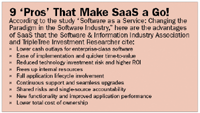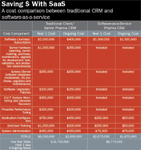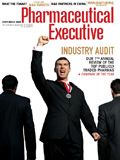The Salesforce Software Shift
The smart way to CRM is through SaaS
You can't teach an old dog new tricks. But when the dog in question is your customer relationship management (CRM) system, you've got a serious problem.

Matt Wallach
In the past year or two, pharma has come under immense pressure from balky pipelines, slowed approvals, safety concerns, and pushback from doctors. One thing has become clear: To remain competitive, pharmaceutical companies need a more cost-efficient, consumer-type sales and marketing model that includes multiple avenues for customer interaction. Like so many other highly competitive US industries, pharma needs to provide customers—all of them—with more ways to get critical information.
This sort of change is possible, of course. The insurance industry, which faced similarly unsettling climate changes, has responded with a new model, new technology, and new ways to get information. Aon Corporation, Fidelity National, Phoenix Companies, Delta Dental, and many others have implemented systems that give customers the ability to call, click, or visit. Geiko customers and others can call customer service, click to the Web site, or visit an office for a quote or claims support. The same phenomenon is happening in retail, high tech, financial services, and many other industries.
Some pharmaceutical executives have, in fact, started implementing new strategies, tapping into the revenue-generating potential of previously ancillary commercial sales "subgroups" such as hospital sales teams, managed markets, and key opinion leader managers. Many are testing new tactics such as video- and e-detailing, closed-loop marketing, call center–based detailing, account-based selling, and alternative sampling. It's a start, but it's nowhere near enough.
These companies face a huge obstacle. The sales-force automation systems they implemented a decade ago are not flexible enough to handle modern-day demands. These systems were built on legacy client/server technology that is now widely recognized as clunky, expensive, and grossly inflexible. They are simply not adaptable enough to allow pharmaceutical companies to adequately test new initiatives, nor are they flexible enough to give customers the ability to choose how they get information. Client/server systems do not allow for change—at least not without spending thousands of dollars to reprogram the servers, which may take many weeks, if not months, to accomplish.

9 Pros That Make SaaS a Go!
Time to Retool
Why so long? In most cases, it's less about the difficulties of changing the software (though these are sometimes considerable) and more about deployment.
Let's say you want to make a simple change to your CRM system, for example, adding a field to record the doctor's favorite hobby. To accomplish that in an older CRM system, you'd need to go through a number of steps: extend the database, define the field, position it, add it to the interface, set who has rights to update it, and so forth. In some systems it's easy, in others not so easy—but you can get it done in anywhere from a few hours to a few months.
Where you lose time is in deployment. Remember, we're talking about client/server software. Think of something like Outlook for e-mail, which requires each user to have a program installed on his or her computer, as opposed to something like Gmail, which is totally Web-based. Installing updated software on 5,000 laptops for a large sales force can take 12 to 18 months. It's a process that companies want to avoid for good reason.
Companies today want to make much more complex changes to their CRMs than just adding fields. For example, if you want to use video detailing, you may have users in a call center. They will need a new way to record the time of a call or the nature of an interaction. Follow-up will be different than in an office detail. The process involves more steps—extending the data model, creating new rules, creating follow-up items, and integrating with the sample disbursement company. Because of the complexity of change, many companies are launching new pilot programs with stand-alone data systems, creating multiple silos of data—a death-sentence in a world so dependent upon shared best practices.
Despite the need to retool business processes, many pharmaceutical companies have no desire to spend more money to retool the existing CRM system that they have already sunk millions of dollars into over the last decade. Who can blame them? In spite of the incredible financial outlay required, more than 80 percent of traditional CRM software deployments either fail to add value, encounter significant adoption issues among end users, or fail outright, according to an AMR Research study.
Put SaaS to the Test
In other industries, as companies have faced the challenges pharma is currently undergoing, many have responded not by upgrading their CRM software, but by moving to a different software model: shifting from client-server programs to "software as a service" or SaaS. SaaS applications are built on a shared infrastructure, where all servers, networks, and functionality are managed centrally. The application is accessible through any Web browser—think Google for business. The host handles all maintenance and upgrades to the system, while SaaS applications are delivered to the customer as a reliable service over the Internet.
SaaS technology enables the development of sales force automation or CRM applications that can scale up or down and that are flexible enough to conduct trials of new strategies across the entire enterprise. New functionality, new users, new fields can all be added or modified "on the fly," without calling in outside resources. Specialized functionality for managed market teams, specialty pharmaceutical reps, or key opinion leader managers can be developed quickly, easily, and economically. The SaaS platform is available as a mobile application, too, for those still-requisite face-to-face physician visits.
The net result of operating a SaaS CRM application over a traditional client/server CRM application comes down to vastly increased effectiveness of the sales force as well as vastly decreased IT financial drain—both up front and over time. Based on ROI analyses from Gartner, Forrester, Yankee Group, and Verticals onDemand, a traditional client/server CRM application to support 1,000 sales reps can cost a pharmaceutical company $5,800,000 in the first year versus only $2,075,000 for a SaaS application. Ongoing, the SaaS application will also be much less costly than the client/server application. (See table for details.)

Saving $ With SaaS
Matt Wallach is the vice president of sales and marketing for Verticals onDemand, Inc. He can be reached at matt.wallach@verticalsondemand.com

The Misinformation Maze: Navigating Public Health in the Digital Age
March 11th 2025Jennifer Butler, chief commercial officer of Pleio, discusses misinformation's threat to public health, where patients are turning for trustworthy health information, the industry's pivot to peer-to-patient strategies to educate patients, and more.
Navigating Distrust: Pharma in the Age of Social Media
February 18th 2025Ian Baer, Founder and CEO of Sooth, discusses how the growing distrust in social media will impact industry marketing strategies and the relationships between pharmaceutical companies and the patients they aim to serve. He also explains dark social, how to combat misinformation, closing the trust gap, and more.